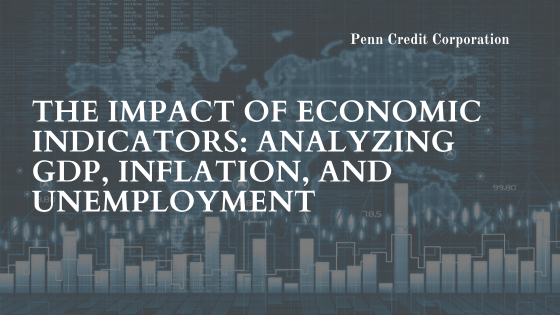Economic indicators play a crucial role in evaluating the health and performance of a nation’s economy. They provide valuable insights into key aspects such as overall production, price levels, and employment conditions. In this blog post, we will delve into three essential economic indicators: Gross Domestic Product (GDP), inflation, and unemployment. By understanding these indicators and their interplay, we can gain a deeper understanding of the overall economic landscape and its impact on individuals and businesses alike.
Gross Domestic Product (GDP): GDP is widely regarded as the most comprehensive measure of a nation’s economic activity. It represents the total value of all goods and services produced within a country’s borders over a specific period. A robust GDP growth rate signifies a healthy economy, as it indicates increased production, higher income levels, and improved living standards. Rising GDP is often associated with positive market sentiments, increased investment opportunities, and job creation.
Inflation: Inflation refers to the persistent increase in the general price level of goods and services over time. While some level of inflation is considered normal for a growing economy, high and unpredictable inflation can have adverse effects. When prices rise too quickly, consumers’ purchasing power erodes, leading to a reduced standard of living. Additionally, inflation can impact investment decisions, as individuals and businesses are more inclined to hold assets with stable values. Central banks closely monitor inflation rates and aim to maintain stable prices through monetary policies.
Unemployment: Unemployment represents the number of people actively seeking employment but unable to find suitable jobs. It is a critical economic indicator as it directly affects individuals and households. High levels of unemployment indicate underutilized resources and can have severe social and economic consequences. Individuals may experience financial hardships, reduced consumption, and diminished overall well-being. Moreover, unemployment often leads to lower tax revenues and increased government spending on social welfare programs.
Interrelationships between Economic Indicators: These economic indicators are not isolated entities; they interact and influence each other. For example, a high GDP growth rate can contribute to job creation and lower unemployment rates. Conversely, high inflation can erode purchasing power and lead to increased unemployment. Unemployment can also impact GDP growth, as idle resources and reduced consumption hinder overall economic activity. Policymakers and economists use these relationships to analyze the economy’s performance and implement appropriate measures to achieve desired outcomes.
The economic indicators of GDP, inflation, and unemployment provide invaluable insights into the overall health and performance of an economy. Understanding their interrelationships allows policymakers, businesses, and individuals to make informed decisions. A thriving GDP signifies economic growth, while stable inflation ensures price stability and a healthy business environment. Low unemployment rates contribute to increased consumer spending and overall economic prosperity. By closely monitoring and analyzing these indicators, we can work towards fostering a robust and inclusive economy that benefits all members of society.
